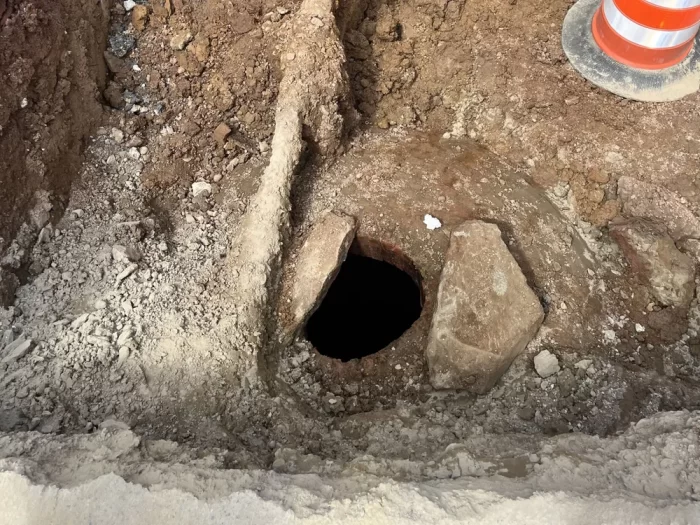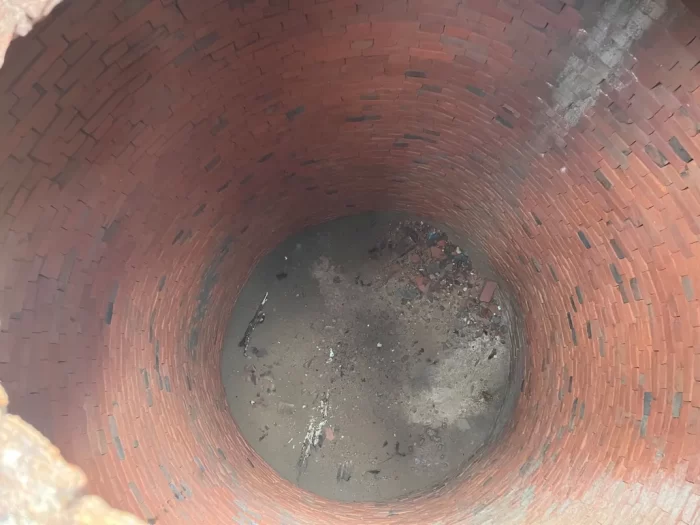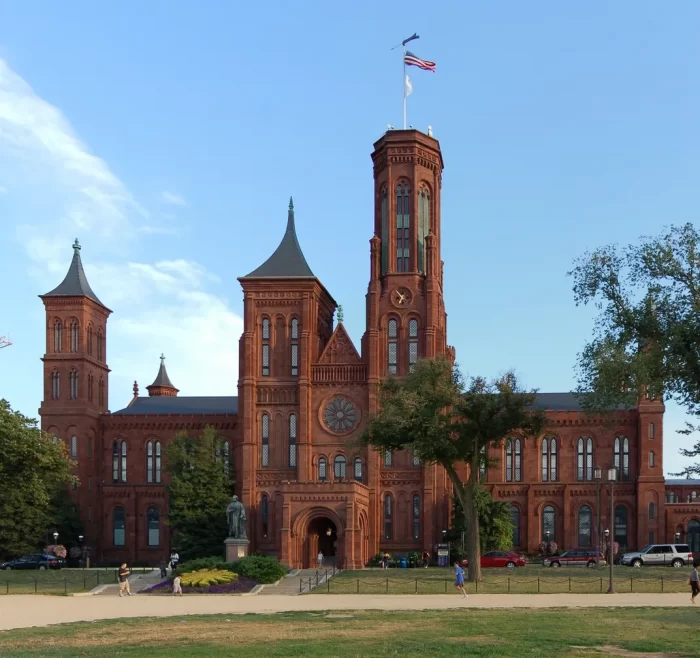Workers Uncover an Underground Chamber Sealed for More Than a Century Near the National Mall
The dry cistern was discovered by construction crews working on the Smithsonian Castle’s renovation
During the renovation of the Smithsonian Castle in Washington, D.C., workers have discovered a hidden chamber. Built in 1847 to store rainwater, the round brick cistern has been sealed for over 120 years.

The opening to the cistern was discovered beneath Jefferson Drive, which runs alongside the Smithsonian Castle and other museums. National Park Service
According to a statement by the National Park Service, construction crews found the chamber’s opening while working on utilities beneath Jefferson Drive near the National Mall, the capital’s iconic stretch of museums and memorials that includes the Smithsonian Institution Building, known as “the Castle.”
While this cistern is very real, a host of mythical structures have long been rumored to lie beneath the National Mall. As Smithsonian magazine’s Jesse Rhodes and Eli Wizevich reported, some people believe a labyrinth of underground Smithsonian archives are below the Mall—a complete fiction. However, there is a real staff-only passageway connecting the Castle to the National Museum of Asian Art’s Freer and Sackler galleries, the National Museum of African Art, and the Arts and Industries Building. There’s also a cramped tunnel between the Castle and the National Museum of Natural History, per Smithsonian, but “most employees prefer a quick jaunt across the National Mall.”

The cistern is 30 feet deep. National Park Service
The Castle has been closed since February 2023 for an extensive restoration dubbed the Castle Revitalization Project—its first renovation in half a century. The building was constructed in 1855 to house the operations of the Smithsonian Institution, named for British scientist James Smithson, who left a generous endowment to the United States upon his death in 1829 and directed that his fortune be used to facilitate “the increase and diffusion of knowledge among men.”
After its establishment in 1846 by Congress as a public trust, the Smithsonian needed a home.
Architect James Renwick Jr. designed its grand new headquarters in the English Norman style—an 11th- and 12th-century mix of early Romanesque and early Gothic design—and the castle was formed in red sandstone from Seneca Creek, Maryland. The new building housed exhibition halls, a library, chemical laboratories, storage areas and, notably, the Smithsonian’s first secretary, Joseph Henry. The Castle became an anchor on the National Mall, and other museums and government buildings soon sprung up around it.

The Castle is listed on the National Register of Historic Places. Geiserich77, CC BY-SA 3.0, via Wikimedia Commons
The Castle Revitalization Project includes restoration and replacement of the Smithsonian’s historic headquarters’ windows, roof and utilities systems, but the Castle’s red stone exterior will not be changed, according to a 2023 statement by the institution. The project, along with its newly discovered contemporary, the brick cistern, illuminate the capital’s infrastructure history.
“Sadly, no national treasures or secret symbols were recovered” in the chamber, writes the National Park Service. “But the cistern offers a neat glimpse into the museum’s and the National Mall’s past.”
Sonja Anderson is a writer and reporter based in New York City.
This post was originally published by Smithsonian magazine. Copyright 2024 Smithsonian Institution. Reprinted with permission from Smithsonian Enterprises. All rights reserved. Reproduction in any medium is strictly prohibited without permission from Smithsonian Institution.
Posted: 10 September 2024
- Categories:



